Introduction to Orange Cultivation
Orange (Citrus sinensis) is one of the most cultivated and consumed citrus fruits worldwide due to its nutritional value, refreshing taste, and multiple uses in the food industry. Success in orange cultivation depends on efficient management at all stages, from soil preparation to harvest. This article provides a comprehensive guide on orange cultivation, focusing on agronomic practices that maximize fruit yield and quality.
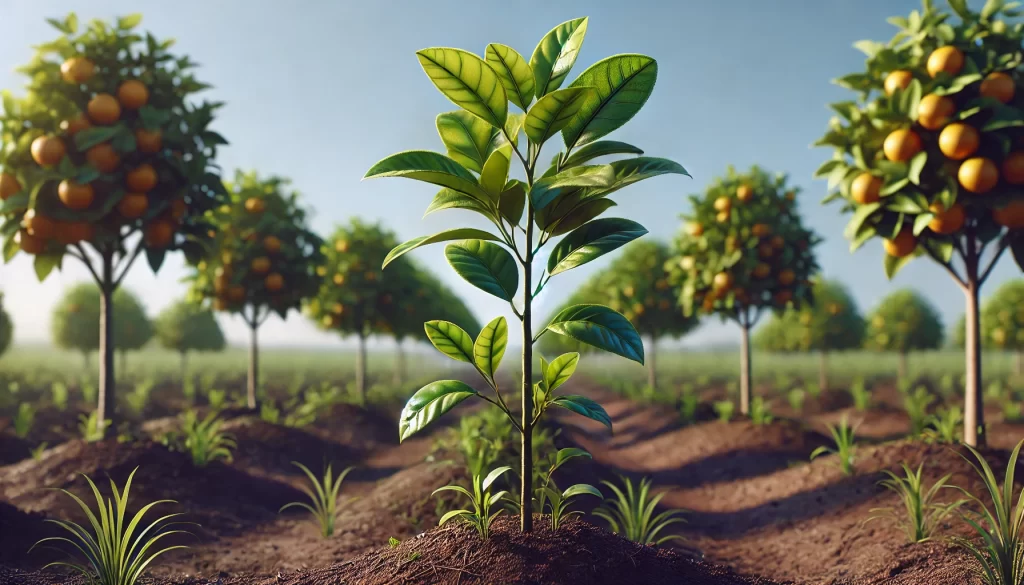
Site Selection and Soil Preparation
Ideal Climate Conditions
Orange cultivation thrives in subtropical and tropical climates with moderate temperatures ranging from 15°C to 30°C. Areas with mild winters and warm summers are ideal for producing high-quality oranges. The optimal annual rainfall is 1,000 to 1,500 mm, evenly distributed throughout the year.
Soil Selection
The ideal soil for orange cultivation should be deep, well-drained, and fertile. Sandy loam or loamy soils with a pH between 5.5 and 6.5 are most suitable. It is important to avoid soils with salinity or poor drainage issues, as they can negatively affect tree development.
Soil Preparation
- Deep Tillage: Perform deep tillage to improve soil structure and promote root development.
- Soil Amendments: Incorporate organic matter, such as compost or manure, to increase fertility and improve water retention.
- Adequate Drainage: Implement drainage systems to prevent waterlogging, especially in areas with heavy rainfall.
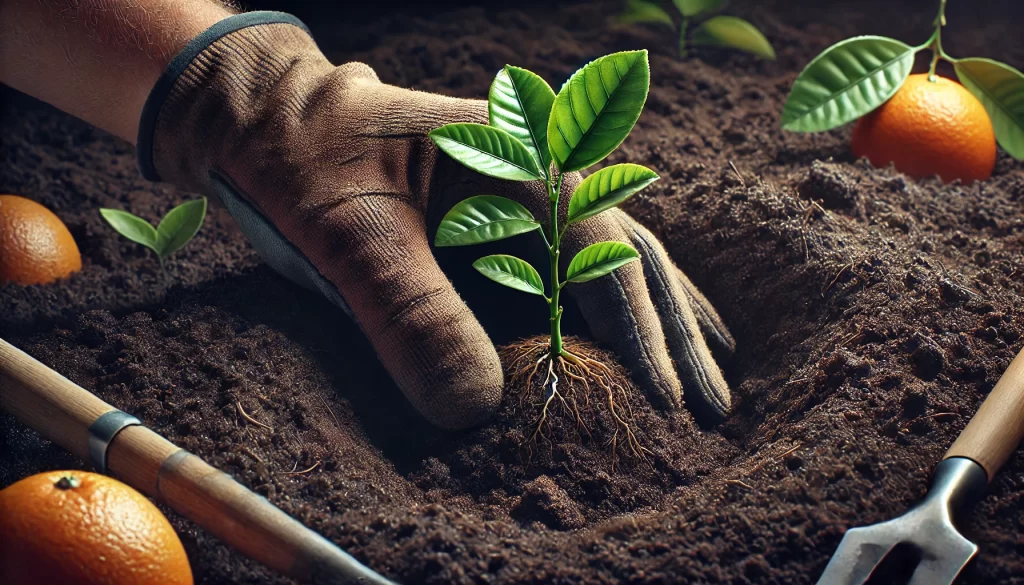
Orange Planting
Variety Selection
The choice of orange variety depends on the target market, climate, and agronomic characteristics. Some popular varieties include:
- Valencia: Known for its high yield and juiciness, ideal for juice production.
- Navel: Famous for its sweetness and ease of peeling, it is one of the most demanded varieties for fresh consumption.
- Hamlin: A cold-resistant variety, suitable for regions with cooler winters.
Orchard Establishment
The establishment of an orange orchard should be carefully planned to maximize productivity:
- Spacing: A spacing of 6 to 7 meters between trees and 7 to 8 meters between rows is recommended, depending on the variety and growth pattern.
- Planting Method: Planting should be done level, in holes prepared with organic amendments. It is essential to avoid planting the trees too deep to prevent root suffocation.

Irrigation and Water Management
Crop Water Requirements
Irrigation is crucial for the growth and development of oranges, especially during the flowering, fruit development, and maturation stages. Water needs vary according to the growth stage:
- Establishment: Frequent and moderate irrigation is needed to ensure good rooting of young trees.
- Vegetative Growth: Maintain consistent irrigation to promote foliage growth and branch formation.
- Fruit Development and Maturation: Abundant and regular irrigation is necessary to ensure optimal fruit size and quality.
Irrigation Systems
- Drip Irrigation: Provides efficient water delivery directly to the roots, reducing evaporation losses.
- Sprinkler Irrigation: Suitable for areas with limited water, though it should be managed carefully to avoid foliar diseases.
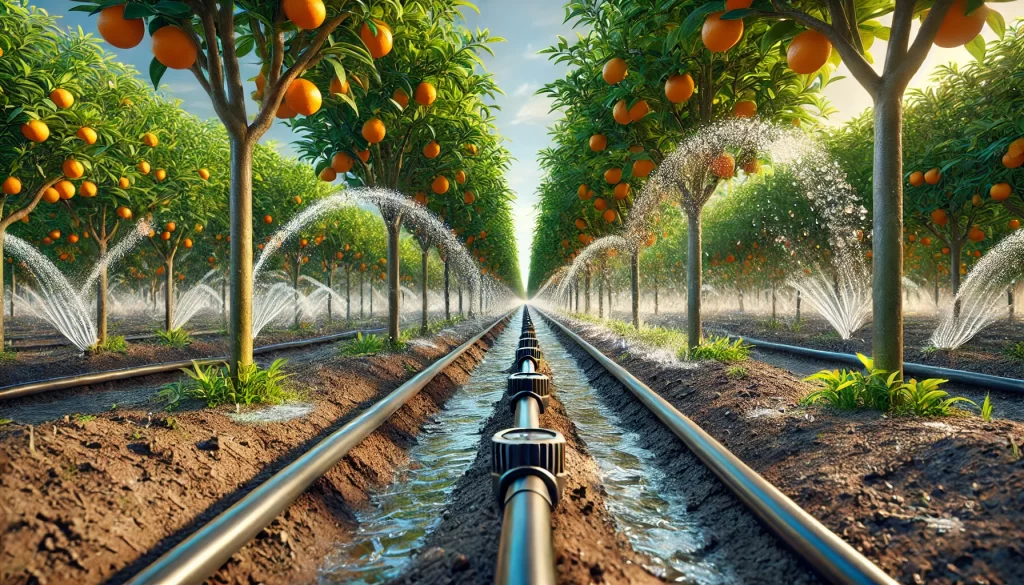
Orange Crop Fertilization
Nutritional Requirements
Orange is a nutrient-demanding crop. A well-balanced fertilization plan is essential for high yields and quality fruits.
- Nitrogen (N): Essential for vegetative growth and fruit formation.
- Phosphorus (P): Promotes root development and flowering.
- Potassium (K): Improves fruit quality, disease resistance, and storage capacity.
- Calcium (Ca) and Magnesium (Mg): Important for peel development and internal fruit quality.
Fertilization Plan
- Base Fertilization: Apply an NPK mix before planting to prepare the soil.
- Top Dressing: Periodic applications during the growing cycle, adjusting doses according to soil analysis and plant condition.
- Foliar Fertilization: Complement with foliar applications of micronutrients to correct specific deficiencies.
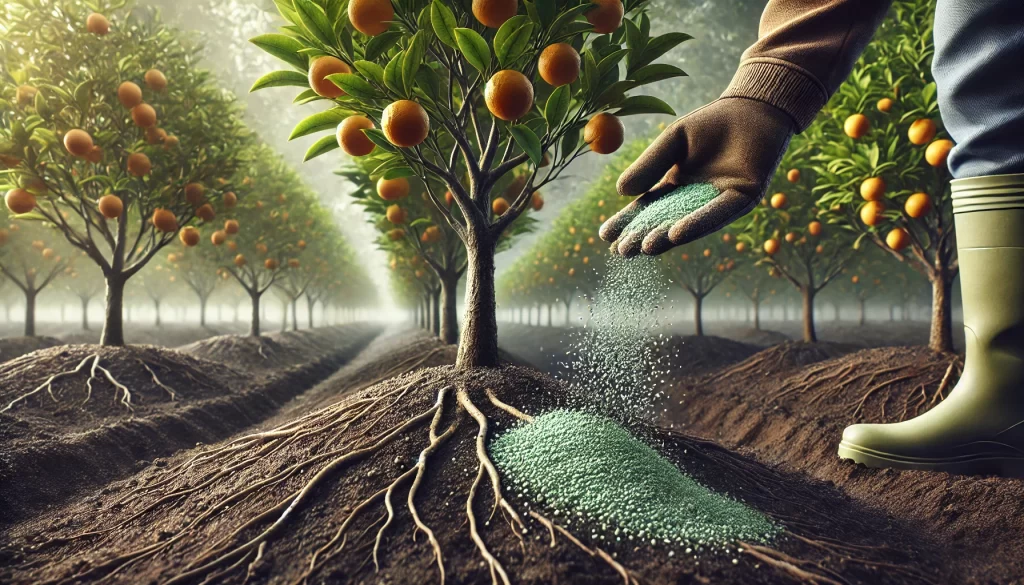
Pest and Disease Management
Common Pests
Pest control is essential to maintaining the health of orange trees and ensuring high-quality fruit production. The most common pests include:
- Aphids: Affect young shoots and can transmit viral diseases.
- Leaf Miner (Phyllocnistis citrella): Causes tunnels in leaves, affecting photosynthesis and weakening trees.
Control Strategies
- Regular Monitoring: Regularly inspect trees to detect pests in time.
- Biological Control: Introduction of natural predators such as ladybugs and parasitic wasps.
- Use of Insecticides: Apply specific products following technical recommendations to minimize environmental impact and avoid resistance.
Common Diseases
Diseases can significantly affect the productivity of an orange orchard. The most common include:
- Citrus Canker (Xanthomonas citri subsp. citri): Causes lesions on leaves, branches, and fruits, reducing harvest quality and quantity.
- Gummosis: Affects the bark of the trunk and branches, causing gum exudation and weakening of the trees.

Control Strategies
- Sanitary Management: Perform sanitary pruning to remove affected parts and prevent the spread of diseases.
- Use of Fungicides: Apply preventive fungicides during periods conducive to disease development, such as the rainy season.
- Crop Rotation: Avoid planting citrus in the same area for several consecutive years to reduce disease pressure.
Harvest and Post-Harvest Management
Maturity Indicators
Orange harvesting should be done when the fruits have reached their physiological maturity, determined by:
- Peel Color: The fruit acquires a bright orange color, though some varieties may have a slight green coloration.
- Fruit Size and Weight: The fruits reach the characteristic size and weight of the variety.
Harvesting Techniques
Orange harvesting is done manually using pruning shears to cut the fruits with a small portion of the stem. It is important to handle the fruits carefully to avoid damage that may affect their shelf life.
Post-Harvest Management
Post-harvest management is crucial to maintaining the quality of oranges until they reach the market. Recommended practices include:
- Washing and Grading: Remove impurities and grade the fruits according to size, color, and quality.
- Wax Treatment: Apply a wax coating to reduce water loss and prolong shelf life.
- Storage: Keep the fruits in refrigerated chambers at a temperature of 5-8°C to preserve their freshness.
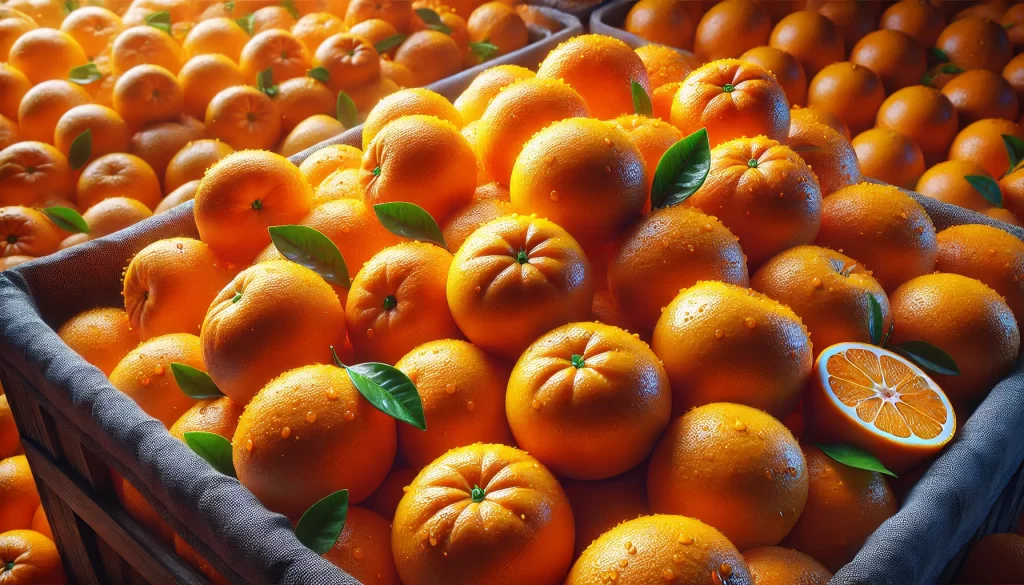
 AgronoBlog – Agriculture Blog
AgronoBlog – Agriculture Blog 